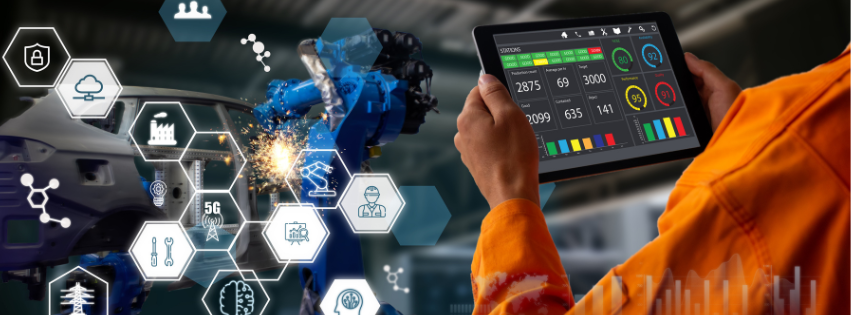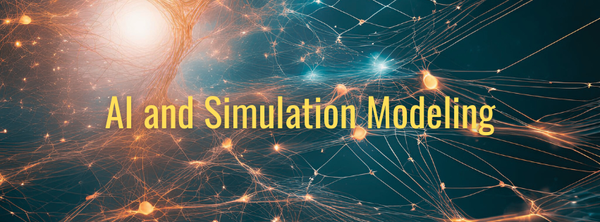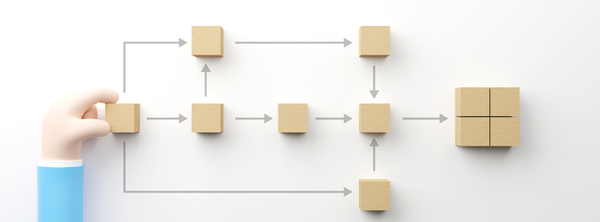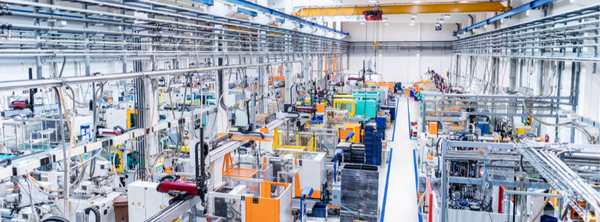What is a Digital Twin?

I've noticed that many people have varying opinions about digital twins. I decided to research and find out what this term means and what resources are available. I aim to give a precise definition to anyone who asks me about it and to determine whether or not I can assist with creating a digital twin.
While I can generate sophisticated simulations, 3D models, and animations and analyze vast amounts of data, I want to understand at what point these elements constitute a digital twin.
As someone passionate about simulation, I would like to explore the role of simulation in the concept of a digital twin and distinguish between what I call “traditional simulation” and simulation with a digital twin.
Understanding the meaning of "digital twin" is crucial as I strive to offer proficient and reliable simulation services within a digital twin. Having said that, I believe this is only the beginning of my research into digital twins, which I think is very relevant to our present-day society.
I will be updating this article as I find out new information. I am also looking forward to your comments and questions, as they will help me guide my research on the topic.
“The Digital Twin model was first introduced in 2002 as a concept for Product Lifecycle Management (PLM)” [1]
According to the latest data available on Google Scholar, there are around 17,200 links to research findings related to the concept of "digital twin" as of September 12th, 2023. Although the exact number may not be entirely precise, it is evident that this topic has gained significant traction and relevance among scholars and experts alike. The increasing interest in this area underscores the potential benefits that digital twin technology can offer in various fields, including manufacturing, healthcare, and transportation.
The idea of a digital twin is changing how we interact with technology. A digital twin is a virtual version of a physical object, such as a vehicle, machine, or building. It enables us to simulate and analyze real-time data and has the potential to transform how we design, construct, operate, and maintain physical assets.
“The Digital Twin is the information construct of the Physical Twin” [1]
The use of digital twin technology has numerous benefits. It speeds up the process of prototyping and testing new designs while allowing for quick adjustments to changing circumstances. By thoroughly comprehending how a physical asset operates, digital twins can predict the possible consequences of a situation and identify potential areas for improvement. Moreover, digital twins enable the remote supervision and management of physical assets, which opens up new prospects for maintenance, operations, and asset management.
“The incorporation of a Digital Twin is intended to mitigate system complexity by providing more and better information about the Physical Twin” [1]
As Dr. Michael Grieves, who is credited with the introduction of the concept of Digital Twins, indicated in a recent interview, the underlying reason for digital twins is that “…information is a replacement for wasting resources…” [2]. For example, we want to use the minimum required physical resources for a given task. It is clear that information cannot replace physical resources for completing tasks. Still, it can aid in reducing waste and achieving faster and cheaper results, in line with the principles of Lean thinking.
Elements of a Digital Twin
Based on my research, a digital twin must have three elements, as shown in the figure below:
- Model: is the stored representation of the physical twin. Structured information is organized through Building Information Management (BIM), Geographic Information Systems (GIS), and Computer-Aided Design (CAD) systems.
- Simulation and Predictive Analytics: This is the computational representation of the physical twin. It can be achieved via simulation representing the behavior of the physical twin and algorithms such as Artificial Intelligence algorithms, such as machine learning, and fuzzy logic.
- Synchronization: The application of Operational Technology (OT) and Information Technology (IT) to data collection and information feedback in real-time. Typically displayed on Dashboards from which airport staff can take proactive actions.

The benefits of a digital twin are that it can help reduce costs and improve the efficiency of the manufacturing process. They can also help improve customer service by providing real-time updates on product performance. Additionally, digital twins can help improve predictive maintenance and enable more efficient decision-making. By creating a virtual model of the product, manufacturers can simulate its performance under different conditions and identify potential problems. This allows them to make changes to the design before they go into production, reducing costs and increasing efficiency. Additionally, digital twins can help monitor the performance of the product in the field and provide real-time feedback on its performance, which can help inform decisions about maintenance and other operations.
After this initial research, I decided, for now, to adopt two definitions of a digital twin that would work well in the simulation context:
“A Digital Twin is a digital replica of entities and their relationships in a reality” [3]
“A Digital Twin is a synchronized instance of a digital template or model representing an entity in its life cycle and is sufficient to meet the requirements of a set of use cases” [4]
For now, this gives me a consistent starting point. I will be crafting my definition as I do more research and also start implementing digital twins.
What about Simulation in Digital Twins?
“… simulations are dynamic representations, not only of form but also of behavior.” [5]

Based on my research, simulation within the concept of digital twins can take two forms, which are shown in the figure above.
We can either use “front running simulation” (FRS) [1], in which we use the simulation to anticipate the behavior of the digital twin in the near term using the most recent data defining the state of the digital twin, or we can run simulations in real-time using real-time technologies such as game engines.
In FRS, the focus is on extracting data from the digital twin. We do not just run one simulation. We run hundreds of simulations (replicas) representing different plausible scenarios. We use an optimized algorithm to predict an optimum operation. This optimization allows us to better plan for required resources.
For example, you have a machine failure in a production line. FRS would give you recommendations on how to best allocate the remaining available sources to maintain the production level. The production manager would use this information to make the best informed decisions.
Another example could be FRS to anticipate resource allocation due to passenger level fluctuations at an airport. Deteriorating weather conditions may be causing flight delays, which can create additional stress on airport facilities such as security screening checkpoints, immigration passport control points, or baggage handling systems.
Airports are complex systems. However, small changes tend to have significant ripple effects throughout the entire system. And sometimes not only in the one airport but throughout the entire aviation system.
Maintaining passenger flow is critical for airport management. Using FRS, airport staff can make optimum resource allocations to maintain a reasonable and acceptable passenger flow. This allows airport staff to implement a proactive approach rather than a reactive approach.
As you may remember from system dynamics, consequences of decisions generally have an effect later in time. We can monitor the digital and physical twin's past, current, and future conditions and behavior via a dashboard and reports. The dashboard closes the feedback loop, as managers can immediately act on the physical twin.
There are two additional topics: immersive and interactive. Because this article is getting quite long and complex, I will develop these topics in separate articles. However, I leave you with quotes from the book written by Jeremy Dalton (link to his book on Amazon). I recommend reading this book if you are interested in XR/VR/AR. This book is a good starting point to learn about these technologies.
“Virtual reality: immerses users in a fully digital environment through a headset or surrounding display. This environment can be computer generated or recorded from the physical world.” [6]
“Augmented reality: presents digital information, objects or media in the physical world through a mobile device or headset. These elements can appear as flat graphics or can behave as a seemingly real 3D object.” [6]
“Extended reality: represents the spectrum of technologies from the part-digital world of augmented reality to the fully immersive experience of virtual reality. Sometimes the terms immersive technology or spatial computing are also used.” [6]
In summary, a Digital Twin is not just one digital replica of an entity (i.e., car, airplane, building, airport). Instead, it is a compilation of numerous elements that work together as an integrated, interoperable, and synchronized system.
As a final thought, by utilizing digital twin technologies, we can gain valuable insights and make data-driven decisions to improve the overall efficiency, safety, and quality of a product or facility.
References:
I have included below a bibliography of all the articles and books I reviewed in preparing this article. Most references are available online for free, except the books.
[1] M. Grieves, “Virtually Intelligent Product Systems: Digital and Physical Twins,” 2019, pp. 175–200. doi: 10.2514/5.9781624105654.0175.0200.
[2] Digital Twin Conversation: Dr. Michael Grieves and Mr. John Vickers by G. Lawton, (Aug. 27, 2023). [Online Video].
[3] “Hands-On Azure Digital Twins: A practical guide to building distributed IoT solutions: Meijers, Alexander: 9781801071383
[4] S. V. Nath, P. van Schalkwyk, and D. Isaacs, Building Industrial Digital Twins: Design, develop, and deploy digital twin solutions for real-world industries using Azure Digital Twins. Birmingham Mumbai: Packt Publishing, 2021.
[5] M. Grieves and J. Vickers, “Digital Twin: Mitigating Unpredictable, Undesirable Emergent Behavior in Complex Systems,” in Transdisciplinary Perspectives on Complex Systems: New Findings and Approaches, F.-J. Kahlen, S. Flumerfelt, and A. Alves, Eds., Cham: Springer International Publishing, 2017, pp. 85–113. doi: 10.1007/978-3-319-38756-7_4.
[6] J. Dalton, Reality Check: How Immersive Technologies Can Transform Your Business, 1st edition. London ; New York, NY: Kogan Page, 2021.
[7] M. W. Grieves, “Virtually Indistinguishable,” in Product Lifecycle Management. Towards Knowledge-Rich Enterprises, L. Rivest, A. Bouras, and B. Louhichi, Eds., in IFIP Advances in Information and Communication Technology. Berlin, Heidelberg: Springer, 2012, pp. 226–242. doi: 10.1007/978-3-642-35758-9_20.
[8] S. V. Nath, A. Dunkin, M. Chowdhary, and N. Patel, Industrial Digital Transformation: Accelerate digital transformation with business optimization, AI, and Industry 4.0. Packt Publishing, 2020.
[9] M. Attaran and B. G. Celik, “Digital Twin: Benefits, use cases, challenges, and opportunities,” Decis. Anal. J., vol. 6, p. 100165, Mar. 2023, doi: 10.1016/j.dajour.2023.100165.




